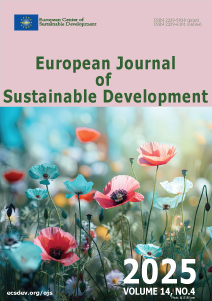Public Expenditure on Education and Economic Growth: An Empirical Analysis of Causality in Serbia
Keywords:
public expenditure, educational sector, rate of economic growth, Granger’s approach to causalityAbstract
The primary objective of this study is to investigate the existence of a causal relationship between public expenditure on education and economic growth in Serbia over the period 2007 to 2022. Public education spending is measured using three indicators: total public expenditure on education as a percentage of GDP, public expenditure on secondary education as a percentage of GDP, and public expenditure on higher education as a percentage of GDP. Economic performance is represented by the real GDP per capita growth rate. To test the hypotheses and achieve the research objective, a causality test based on Granger’s methodology is employed. The results indicate a statistically significant unidirectional causal effect running from public expenditure on education to economic growth. Within the applied empirical framework, this suggests that trends in education-related public spending can be used to forecast real GDP per capita growth. These findings emphasize the importance of investment in education as a strategic factor in promoting sustainable economic development, warranting greater attention in the formulation of public policy.
Keywords: public expenditure, educational sector, rate of economic growth, Granger’s approach to causality, Serbia
Downloads
Published
How to Cite
Issue
Section
License

This work is licensed under a Creative Commons Attribution-NonCommercial 4.0 International License.





